5 Best Resistance Workouts for Women Over 50, According to Experts
Build strong bones, joints, and muscles with these simple exercises.
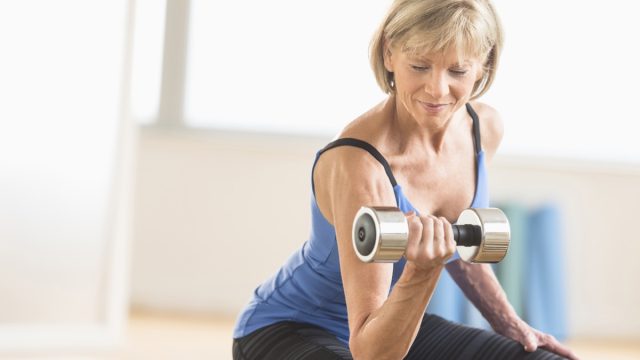
As we age, many of us will notice a decline in muscle, bone, and joint strength. In fact, some studies have found that muscle mass can decrease by three to eight percent per decade after the age of 30, and the rate of decline only worsens as the decades pass.
This involuntary loss of muscle and bone mass can leave older adults feeling more frail, and is associated with higher incidence of chronic illness, a loss of independence, and a lower quality of life. Thanks to the effects of menopause, women over 50 are often most susceptible to these changes.
However, there are many ways to take control of your fitness before your fitness level controls you—and by starting early in your 50s, you'll have a better chance at retaining muscle, bone, and joint strength. Read on to learn which five resistance workouts are most effective, and to find out which benefits you can expect from each.
READ THIS NEXT: If You're Over 65, Don't Wear These 6 Clothing Items to Exercise.
1
Incline push-ups
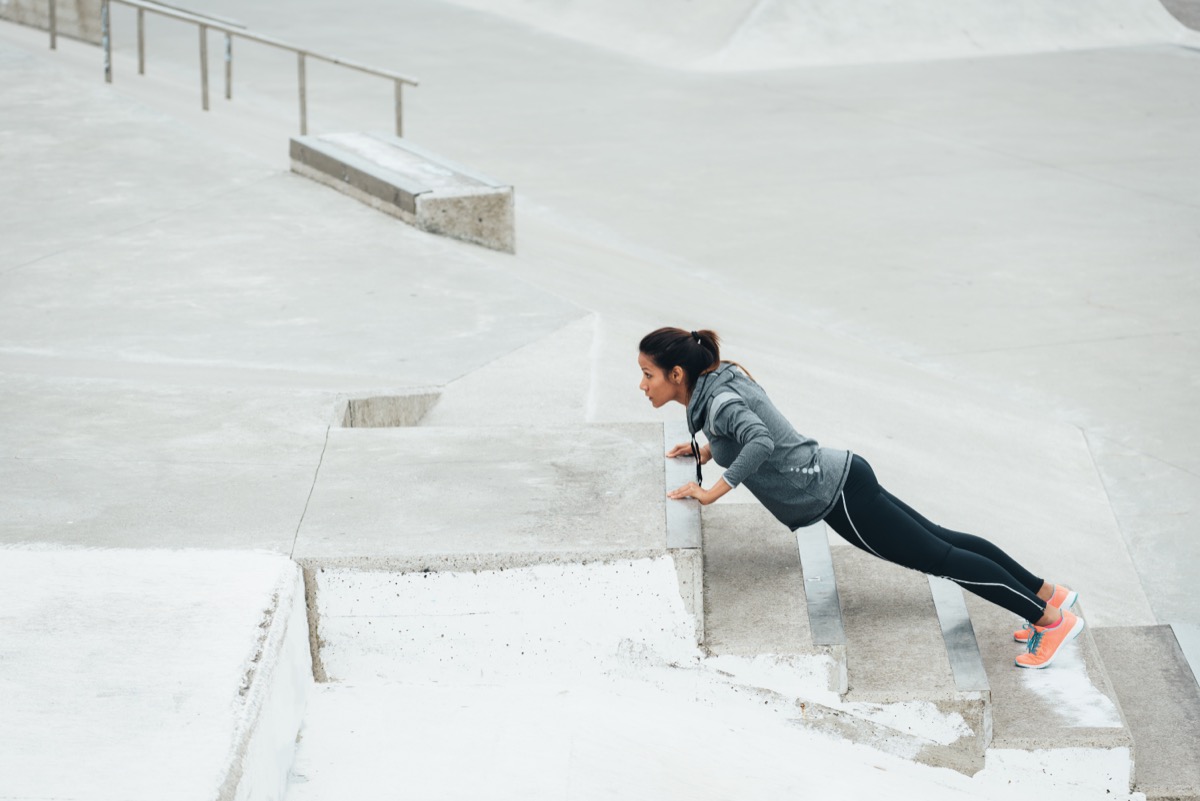
According to Rachel MacPherson, CPT, a personal trainer, nutrition specialist, and women's health coach, women over 50 should focus on resistance exercises "that don't aggravate their joints but still help build joint strength and mobility while boosting muscle mass and bone density." She suggests starting with basic functional movements that use your own body weight to build strength.
MacPherson says that incline push-ups are a great way for women over 50 can to build their chest, core, and arm strength, "which is vital for protecting the spine, neck, and shoulders from pain and injury and improving daily functioning."
To do an incline push-up, space your hands wider than the chest and perform a push-up with your upper body leaning against a steady, elevated surface, such as a weight bench or sofa, she says. "The higher the incline, the easier the exercise will be," MacPherson tells Best Life.
READ THIS NEXT: If You're Over 50, Don't Leave This Out of Your Will, Expert Says.
2
Bodyweight lunges
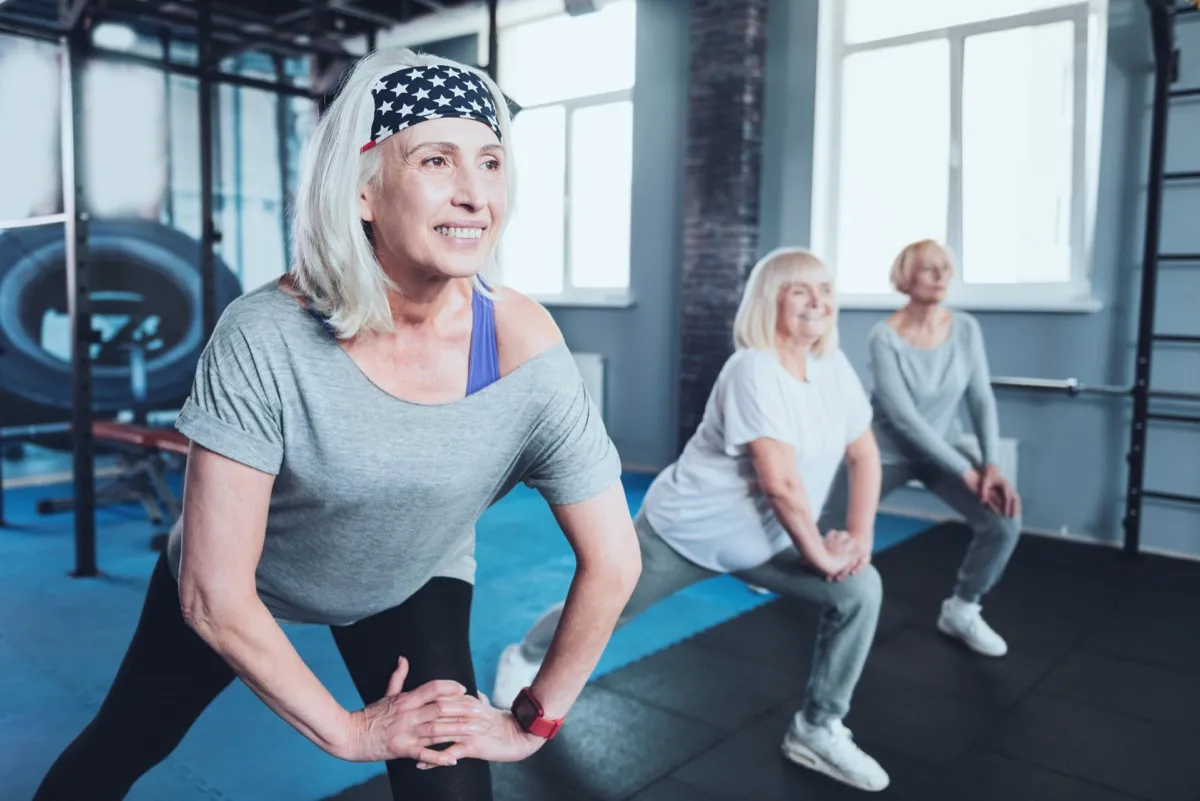
Lunges are a a versatile exercise that can work a range of different muscle groups depending on how you execute them. "Perform lunges backward, forward, to the side, and diagonally to work the muscles, balance, and stability in several planes of motion," suggests MacPherson. "To perform a lunge, take a large step in the direction of choice while keeping the other foot planted. Keep your back straight and your chest high. Bend your knee to lower yourself toward the ground. Aim to complete as many reps as it takes until you feel that after two to three more, you would not be able to complete another one," she says.
Besides building strength lunges come with another major benefit: They can help prevent falls and injuries by stabilizing your muscles and joints.
3
Face pulls
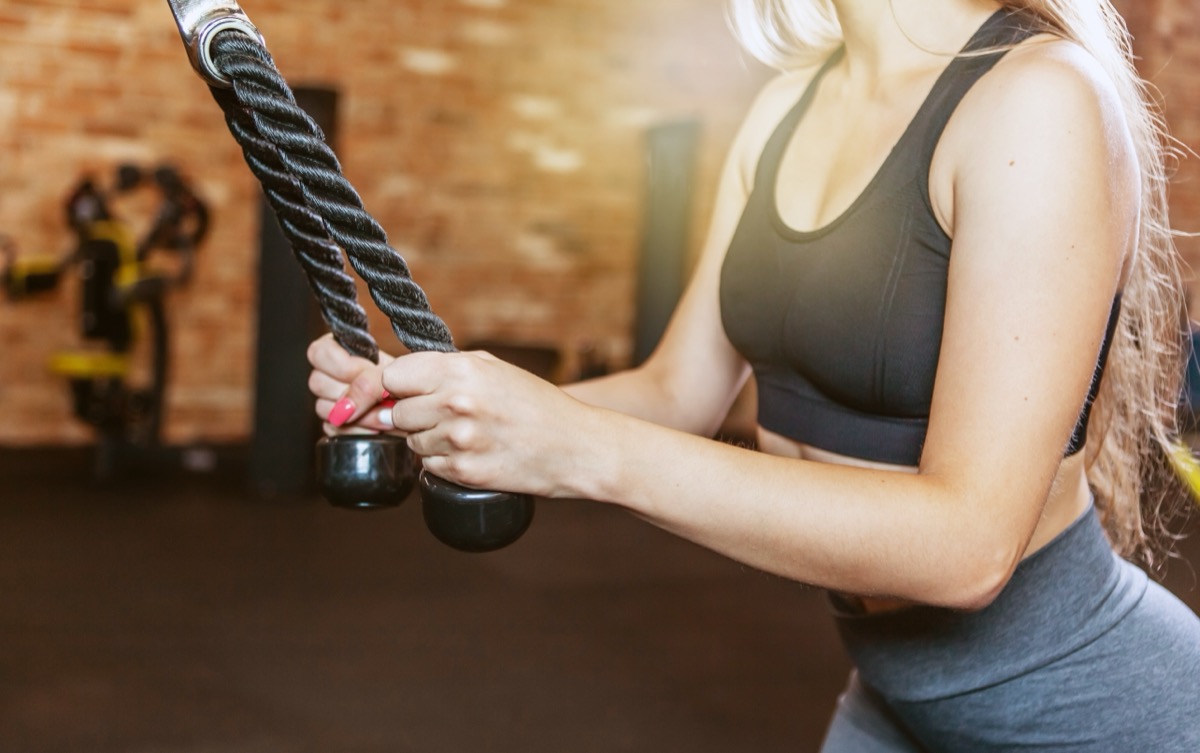
The next resistance training exercises to try are banded or cable face pulls. MacPherson says these strengthening exercises help strengthen the rear shoulders and upper back, "which are often weakened and stretched due to a lifestyle of sitting or hunching over phones, computers, counters, and sinks."
To perform face pulls, the personal trainer says you'll need to anchor a band or cable over your head height and grasp the handles, stepping back until there is tension in the band. "Then lift the handles up to eye or nose level. Flare your elbows out so they are pointing behind you. Lead with your elbows to pull the band toward you, stopping when your elbows are as far back as you can manage comfortably. Squeeze your shoulder blades for a count, then release slowly and with control," MacPherson says.
For more health news sent directly to your inbox, sign up for our daily newsletter.
4
Deep squats
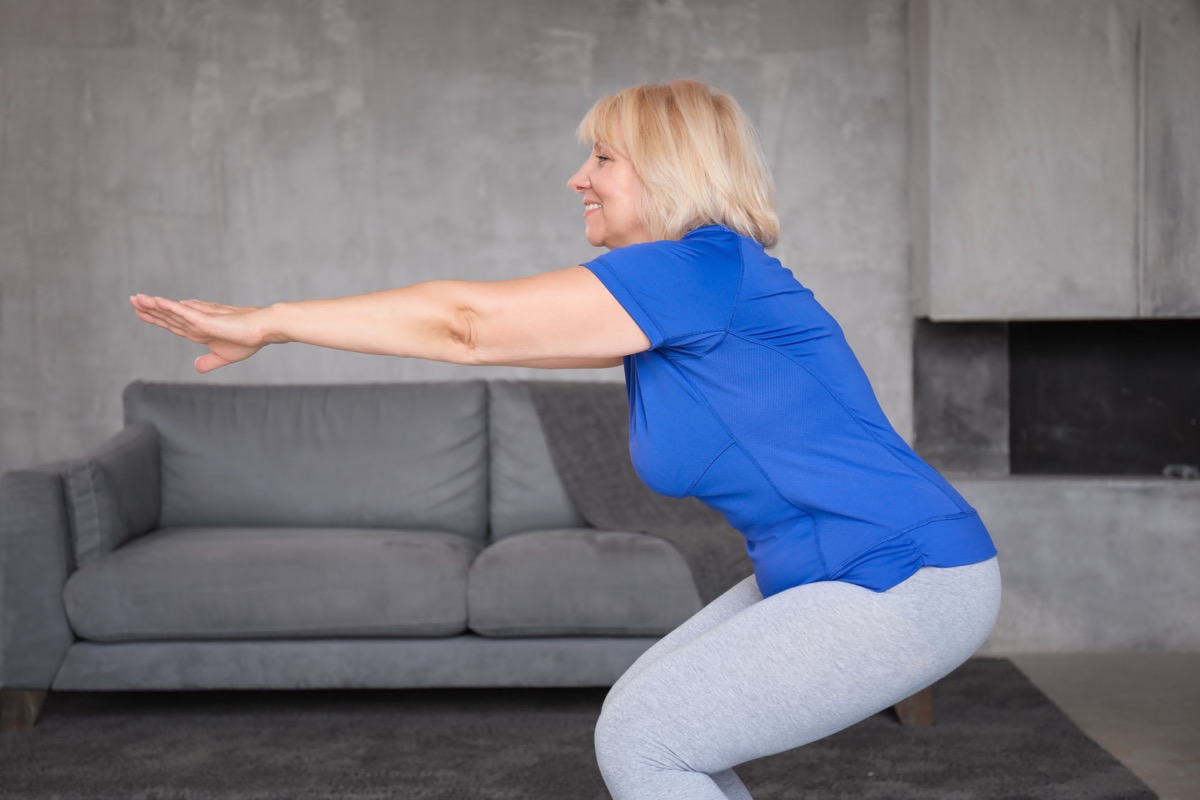
In order to retain your mobility as you age, it's important to retain your leg strength. "Squats are one of the best exercises to build your leg muscles—specifically the quadricep muscles. As we age the quadricep muscles lose muscle mass," says Samantha Smith, PT, DPT, a geriatric physical therapist that specializes in exercises for older adults, knee pain and knee replacements.
MacPherson says you can start a new squat routine by practicing a deep squat while holding onto a post or door frame for support. "Hinge your hips and bend your knees to lower your torso toward the floor. Keep your chest up high and your back as straight as you can. If you can manage a deep squat, try placing your elbows inside your knees and pressing your hands together to push your knees apart further and deepen the stretch," she says.
Over time, you can add a new layer of challenge by extending the duration of your squats. "Once comfortable doing this, you can practice rocking from side to side to help stretch and mobilize your ankles and hips further," MacPherson adds.
5
Overhead presses
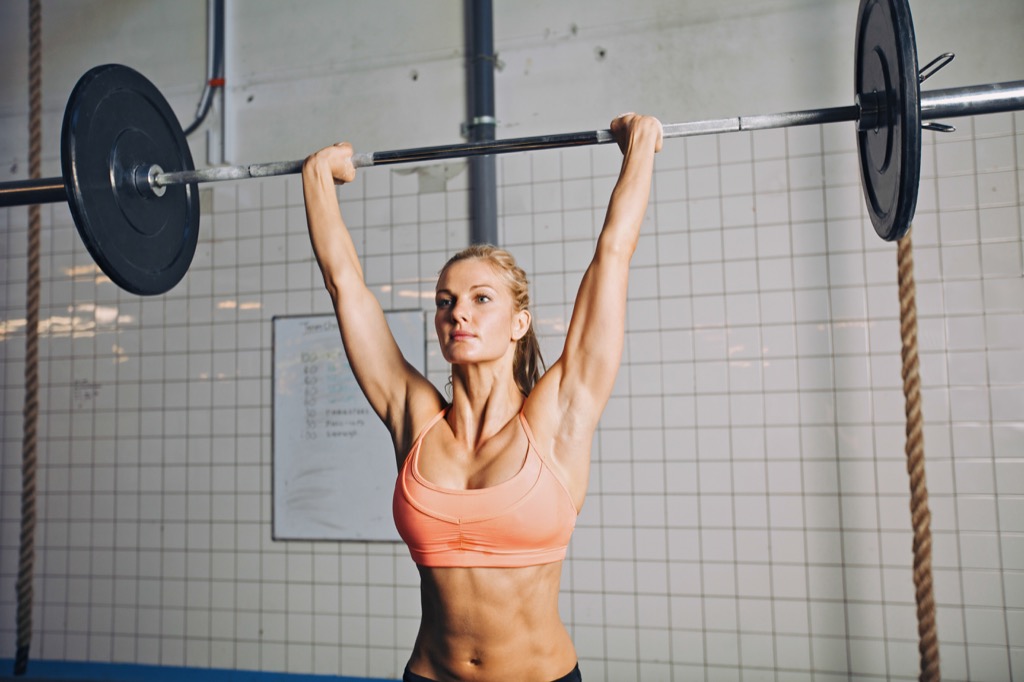
Smith says that overhead presses, which work the arms' delts and triceps, are another important workout for women over the age of 50. "This exercise is specifically important so we can continue to be able to put things in and out of cabinets," she says.
To do overhead presses, begin by placing your foot stance and hands shoulder-width apart. Lifting at the knees, bring a barbell weight up to your chest. With your elbows oriented forward and your back straight, raise your arms up above your head until fully extended. Lower the barbell back down to your upper chest, and repeat for two to five reps at the beginner level.
Before you begin any new exercise regimen—especially one that involves heavy weights—it's important to consult with your doctor first. Be sure to disclose any history of injury or illness before deciding on your new workout routine with a medical professional's help.
Best Life offers the most up-to-date information from top experts, new research, and health agencies, but our content is not meant to be a substitute for professional guidance. When it comes to the medication you're taking or any other health questions you have, always consult your healthcare provider directly.





















